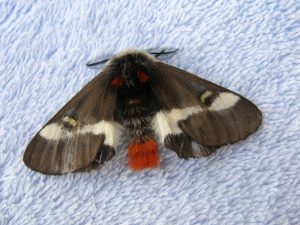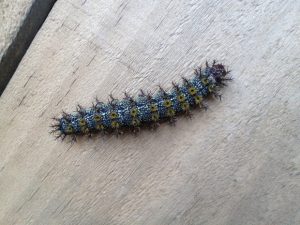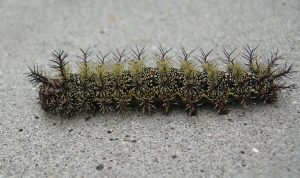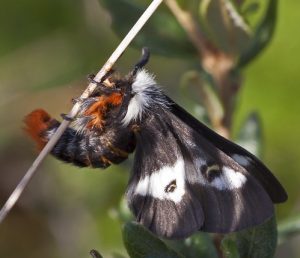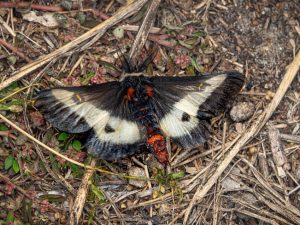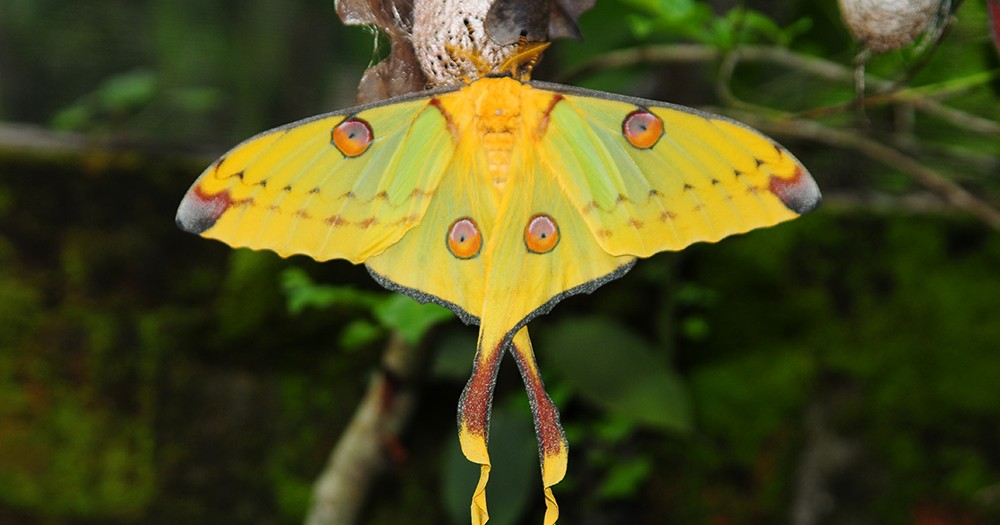Buck Moth (Hemileuca maia)
Buck moth of the Saturniidae family inhabits the oak forests encompassing a wide range from Florida in the southeast to New England in the northeast and then Texas and Kansas in the western belt. People refer to them as ‘buck’ because these moths are mostly spotted flying in the daytime during the deer season.
lsuagcenter.com
Scientific Classification
- Family: Saturniidae
- Genus: Hemileuca
- Scientific Name: Hemileuca maia
Description and Identification
Caterpillar
The larvae, particularly the older ones, appear black and spiny, with white spots covering their body. They have bumpy spines arranged throughout their body in several rows, with those on top being a little longer. These spines remain connected to a poisonous sac, leading to burning, itching, and even nausea if the larva stings. The buck moth larva grows to about 6.35 cm long.
Pupa
The larva pupates in the loose soil or leaf litter, and the adult moths emerge between September and December.
Adult Moth
Sexual Dimorphism: Present
The males have a smaller body and wingspan than the females.
Color and Appearance
Forewings: When opened, it appears black with a white band going through the middle. One striking feature is the small kidney-shaped spot bordered in black, lying close to the forewing’s outer part on both sides. When closed, the black and white pattern remains the same, and the spot on only one of the sides can be seen.
Hindwings: When opened, the color is similar to the forewings, with the additional inclusion being the blackish disc-like spot situated inside the white band. When closed, there is no change in the color, but for the fact that the small spot may not be prominently visible.
Both the male and the female have an all-black body except the red patch that the former has on their abdominal tip.
Average Wingspan: 5.08 – 7.62 cm
Flight Pattern: Consistent
Season: November – December
Eggs
The white, round eggs are mostly laid roundly on the oak twigs.
Quick Facts
| Distribution | Throughout the United States, including the states of Maine, Florida, New England, and even far west up to Kansas, Wisconsin, and Texas |
| Habitat | Woodland areas, especially near oak trees |
| Predators | Birds, spiders |
| Lifespan of Adults | Not recorded |
| Host Plants | Different oak tree varieties like the blackjack oak, dwarf chinquapin oak, live oak, white oak, scrub oak |
| Adult Diet | Don’t feed |
Did You Know
- Dru Drury, a British collector, described these moths first in 1773.
- It has 11 subspecies in all, of which Hemileuca maia maia is enlisted in the endangered list in Connecticut.
- There have been reports of the buck moth caterpillar’s stinging summer campers in the Goshen Scout Reservation of Virginia.
Scientific Classification
- Family: Saturniidae
- Genus: Hemileuca
- Scientific Name: Hemileuca maia

